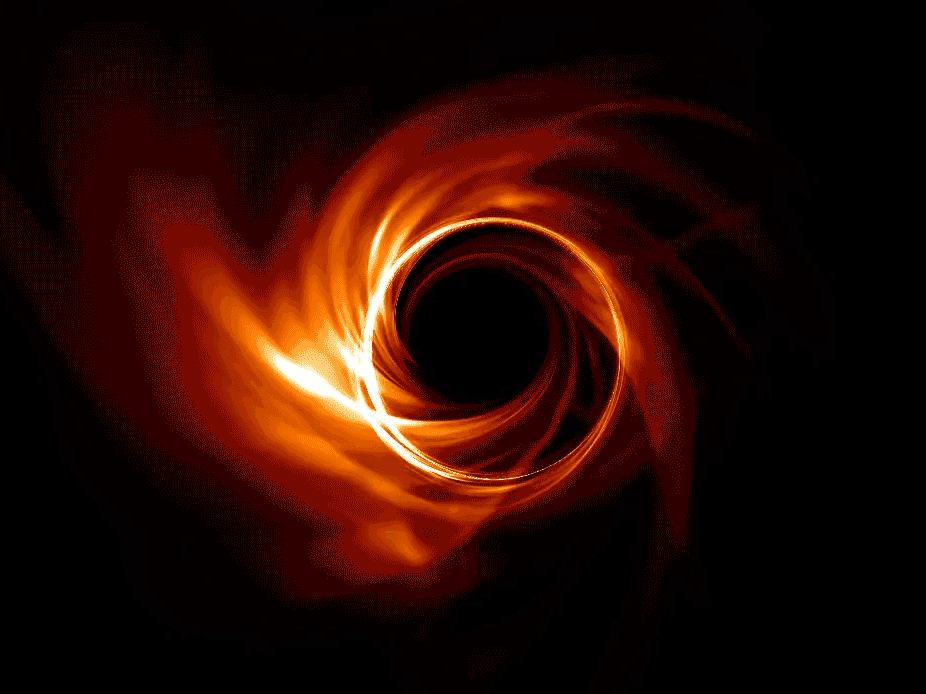Astrophysics
Scientists Find Ghostly Neutrino Particles From the Milky Way
It's no surprise that neutrinos come from within our galaxy, but the tiny, chargeless particles are very hard to detect
Gravitational Waves Create a Constant 'Hum' Across the Universe
Breakthrough research suggests the continuous ripples in spacetime could be caused by pairs of supermassive black holes, spiraling toward collisions
See the Sharp New Image of a Supermassive Black Hole
Astronomers used machine-learning technology to improve a 2019 visualization of the M87 black hole, located some 54 million light-years away from Earth
See the James Webb Telescope's Stunning New Snapshot of an Exploded Star
The supernova, known as Cassiopeia A, is located roughly 11,000 light-years from Earth and could offer insights into cosmic dust and star death
Black Hole Hurtling Through Space Leaves a Trail of Stars in Its Wake
Researchers theorize a stream of stars 200,000 light-years long came from a black hole ejected from its galaxy
Burning Space Junk Creates Mysterious Lights in California Sky
Bright streaks observed Friday were jettisoned equipment from the International Space Station re-entering Earth’s atmosphere
What Does the Universe Sound Like?
The Smithsonian Astrophysical Observatory and other researchers have melded astronomy and music to offer a new oeuvre
Webb Telescope Finds Evidence of Massive Galaxies That Defy Theories of the Early Universe
The six “universe breakers” appear much larger than what scientists thought was possible at that time
James Webb Telescope Confirms the Existence of Its First Exoplanet
The high-tech observatory is helping to study the rocky, Earth-sized world that's 41 light-years away
What the Image of the Milky Way's Black Hole Really Shows
This year’s picture of the swirling plasma around the massive object's edges will help to reveal more about the galaxy’s history and evolution
Puffy, Marshmallow-Like Planet Could Float in a Bathtub
Scientists found the new exoplanet located in the Auriga constellation 580 light-years away
An Early Star’s Remains May Be Swirling Around a Black Hole
The first stars exploded long ago, but scientists say they've detected the chemical fingerprint that one of them left behind
When Will the Next Supernova in Our Galaxy Occur?
Scientists have new tools at their disposal to detect and study the dramatic explosion of a star
NASA Releases First Breathtaking Images Taken by James Webb Space Telescope
The five pictures from the most powerful space observatory ever launched offer a deep look back in time and the promise of stellar things to come
The Five Big Ways the James Webb Telescope Will Help Astronomers Understand the Universe
The highly awaited observatory is set to break new ground in many areas of astronomical research
Beneath Canyons on Mars, Astronomers Find Potentially 'Water-Rich Area the Size of the Netherlands'
A Martian orbiter located a large reserve of hydrogen in a mountainous area of the Red Planet
Why the Tibetan Plateau Might Be the Ideal Spot for the Telescope of the Future
A team in China has identified a location that could give the Eastern Hemisphere its first major observatory
Saturn's Seismic Activity Makes Waves in Its Iconic Rings
Scientists uncover new insight into the planet's core based on observations of its rippling rings
Retired NASA Engineers Return to Fix Hubble Telescope
The repaired space computer is back online and already beaming spectacular images of distant galaxies back to Earth
Amateur Astronomer Discovers New Moon Orbiting Jupiter
Kai Ly spotted the unnamed satellite using telescope images from 2003
Page 2 of 13
:focal(500x281:501x282)/https://tf-cmsv2-smithsonianmag-media.s3.amazonaws.com/filer_public/e0/cf/e0cf229e-6691-4114-a008-ff6c9af10ed5/gal_upgrade_2019week22_icl_214074e16.jpg)
:focal(1066x705:1067x706)/https://tf-cmsv2-smithsonianmag-media.s3.amazonaws.com/filer_public/c8/f4/c8f48b1e-6d24-4dd6-b137-0b343feb8457/gettyimages-st000710.jpg)
:focal(288x288:289x289)/https://tf-cmsv2-smithsonianmag-media.s3.amazonaws.com/filer_public/c6/47/c647b94c-ad81-48ab-a705-577a3c14c866/m87_primo_single_bw8_no_scale_5000px.jpg)
:focal(2004x2014:2005x2015)/https://tf-cmsv2-smithsonianmag-media.s3.amazonaws.com/filer_public/c0/e0/c0e0fff2-f275-414b-b919-5664669b2750/stsci-01gwqc2n0mcsm6px1z6a8fbyqm.png)
:focal(960x549:961x550)/https://tf-cmsv2-smithsonianmag-media.s3.amazonaws.com/filer_public/96/4e/964e2115-345d-4945-b7b3-a88b9e11efba/hubble_runawayblackhole_stsci-01gx657xta7kn3a8rpsdxs9d07.png)
:focal(350x280:351x281)/https://tf-cmsv2-smithsonianmag-media.s3.amazonaws.com/filer_public/3b/ee/3beee3e8-4367-487d-895e-3a3dbd5a4cb2/graphics-geo.jpeg)
:focal(800x602:801x603)/https://tf-cmsv2-smithsonianmag-media.s3.amazonaws.com/filer_public/51/11/511110aa-d8b4-44fe-b4e5-88ed0e798f78/whattheuniversesoundslike-v1_web.jpg)
:focal(350x237:351x238)/https://tf-cmsv2-smithsonianmag-media.s3.amazonaws.com/filer_public/44/b0/44b00258-cc50-4e51-b5d0-c1337b736a46/low-res_massive1png.png)
:focal(1920x1097:1921x1098)/https://tf-cmsv2-smithsonianmag-media.s3.amazonaws.com/filer_public/db/0a/db0aab9b-b6c2-47d1-897b-71519b22a7fb/stsci-01gnvtx59mw32tpe2jc6g8h6j0.png)

:focal(960x722:961x723)/https://tf-cmsv2-smithsonianmag-media.s3.amazonaws.com/filer_public/e9/bc/e9bce8c9-7d01-48a7-bebe-29e4326792d4/marshmallows-788771_1920.jpg)
:focal(2560x1463:2561x1464)/https://tf-cmsv2-smithsonianmag-media.s3.amazonaws.com/filer_public/8c/59/8c599408-737a-4a46-b183-8581c6dece18/noirlab2222a.jpeg)
:focal(800x602:801x603)/https://tf-cmsv2-smithsonianmag-media.s3.amazonaws.com/filer_public/29/a4/29a4dd0e-186a-44a0-9ee1-fcddc5a738bf/crab-nebula-mosaic_web.jpg)
:focal(800x602:801x603)/https://tf-cmsv2-smithsonianmag-media.s3.amazonaws.com/filer_public/9b/5a/9b5a39d6-7e7d-4065-bfd6-3b33ff97044d/deep-fieldsmacs0723_web.jpeg)
/https://tf-cmsv2-smithsonianmag-media.s3.amazonaws.com/filer/e2/b1/e2b1ec8c-edab-4084-9771-c1ee2e556ecd/jwt-standingtall_image-credit-nasadesiree-stover_websocial.jpg)
:focal(1015x541:1016x542)/https://tf-cmsv2-smithsonianmag-media.s3.amazonaws.com/filer_public/19/14/19146d0f-3e37-4658-a00e-498987ce7760/valles_marineris_pillars.jpg)
:focal(2106x1751:2107x1752)/https://tf-cmsv2-smithsonianmag-media.s3.amazonaws.com/filer/29/ff/29ffdb0a-21c3-4330-b46e-e5f4585848db/lenghu_observatory_licai_deng.jpg)
/https://tf-cmsv2-smithsonianmag-media.s3.amazonaws.com/filer/07/09/07096211-5ebe-425f-a01a-801dfacb822c/saturn-core.jpg)
/https://tf-cmsv2-smithsonianmag-media.s3.amazonaws.com/filer/01/e3/01e31b96-dd66-47e9-a855-bcc845c4901c/27946391011_13564aa441_o.jpg)
/https://tf-cmsv2-smithsonianmag-media.s3.amazonaws.com/filer/62/56/62564a25-d5f9-4964-a1be-582284ddafa9/4479811906_930369a7c9_o.jpg)